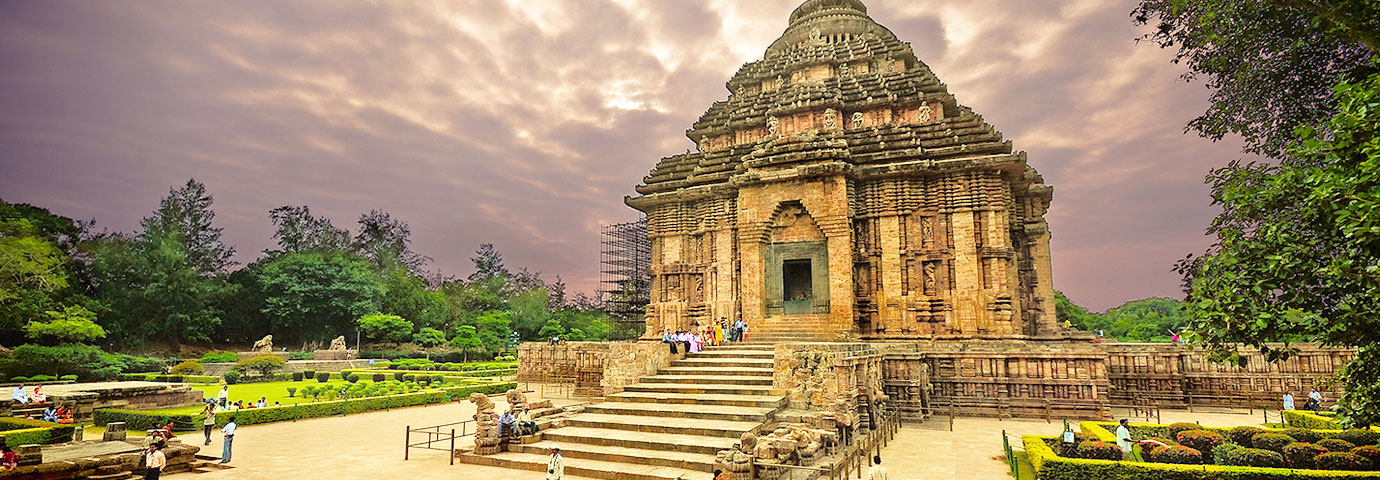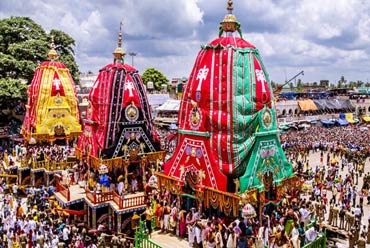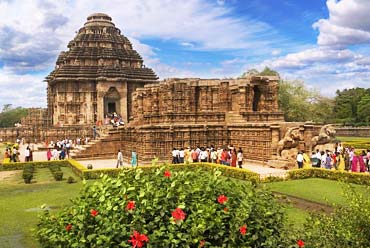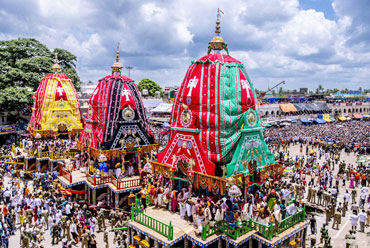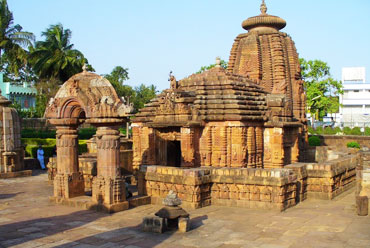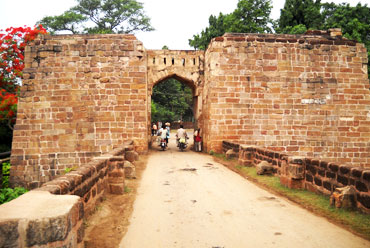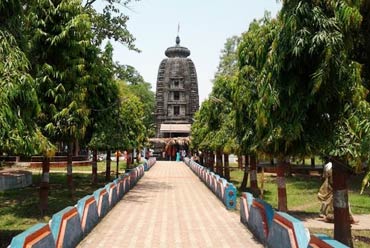Tourist Attractions in Konark
The UNESCO has listed the Sun Temple as a World Heritage Site. The structure of the temple resembles a colossal chariot, with 24 wheels, pulled by seven straining horses, and has a three-tiered pyramidal roof topped off by a fine spire. The Sun God's chariot also represents the seven days of the week and the 24 hours of the day. The temple is a brilliant chronicle in stone, with impressive sculptures. Every aspect of life is represented here, and the erotic imagery depicts the sublimation of human love manifested in countless forms. Scenes from court, civic life, and war are also done with great precision.
The museum of the Archeological Survey of India is just outside the temple enclosure. The museum houses many sculptures and carvings from the ruins of the Sun Temple. The stone images of nine planet deities, the Navagrahas, which were originally set above the temple's ornamental doorways is now kept as a living shrine.
Situated around 3 km from the temple is Konark beach. The beach is very picturesque and one gets the beautiful sight of sunrise over here. One can also enjoy sunbathing here.
Places Around Konark
Kuruma is at a distance of around 8 km from Konark and is approachable by jeep. Many Buddhist sites have been excavated here. A recent excavation has unearthed antique images of Buddha seated in Bhumisparsa Mudra (earth-touching pose) along with the image of Heruka, who is related to Buddha Akshobhya family (water element)
Chaurasi is the site of the shrines dedicated to Laxminarayanan, Amareshras, and Barahi. Barahi is a deity dating back to the 9th century AD, worshipped according to tantrik practices. She is a mother goddess with the face of a boar and is depicted holding a fish in one hand and a cup in another.
Pipli is on the way to Konark from Puri. The place is famous for its exquisite appliqué work, which depicts the essence of Oriya culture. It is also the home of the most colorful and original awnings, canopies, garden and beach umbrellas, shoulder handbags, etc. The cocktail effect of the colors is certainly a feast for the eyes. Situated 7 km from Konark, Ramachandi is located at the confluence of the river Kusabhadra and the Bay of Bengal. The deity of Konark, Goddess Ramachandi, is worshipped here.
At 45 km from Konark, Kakatapur is located in the Prachi valley and is famous for its shrines of Goddess Mangala and Banadurga. Legend has it that the directions for reaching the holy log from which is created Lord Jagannath's icon comes from her. The famous 'Jhamu Yatra' is held in April-May when devotees walk over a narrow trench strewn with embers. A famous fishing harbor, Astranga (of eight colors) lies 55 km from Konark. Washed by the waters of the Bay of Bengal, with its magnificent sunsets, the place really lives to its name.

